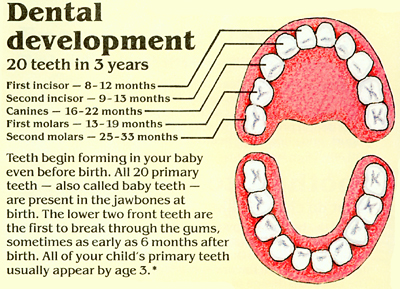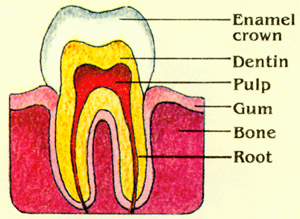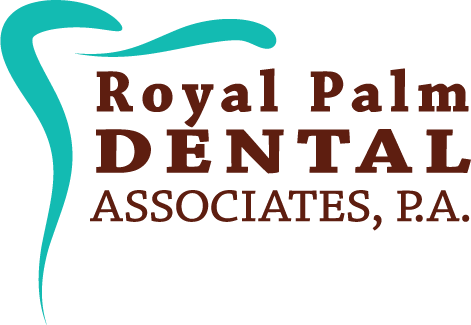From the first tooth to the full set
Your Baby’s gums and teeth should be cared for soon after your baby is born. This booklet is a handy guide to keeping young mouths clean and cavity free.
Gum care for your infant
A gentle wipe does wonders
You can begin gum care within the first few days after birth. After each feeding, gently wipe the baby’s gums with a soft, damp washcloth or gauze pad. When the first teeth appear, begin using a children’s soft-bristle toothbrush or gauze pad to clean them. Giving your baby regular cleanings after each meal instills good oral cleaning habits early in life.
Teething
A cranky time for your baby
The discomfort of teeth beginning to break through the gums can cause your baby to become irritable. You can ease some of the discomfort by lightly rubbing the baby’s gums with a clean finger or a wet gauze pad. A cool teething ring can also help to soothe your baby’s tender gums.
Baby bottle cavities
Avoidable decay
Once your baby’s teeth begin to appear, you need to take extra care that these new teeth do not develop cavities. One common way a baby can develop cavities is called “baby bottle tooth decay”, which occurs from constant nursing on milk, formula, or sugary juices, especially before bedtime or nap time. Baby bottle tooth decay can be prevented by giving your baby a safe pacifier or a bottle of plain water at bedtime or nap time.
Dental development
20 teeth in 3 years
Teeth begin forming in your baby even before birth. All 20 primary teeth – also called baby teeth – are present in the jawbones at birth. The lower two front teeth are the first to break through the gums, sometimes as early as 6 months after birth. All of your child’s primary teeth usually appear by age 3.*

Brushing primary teeth
When to start
You can begin brushing your child’s teeth once they appear. Use a child-sized soft-bristled toothbrush and a small, pea-size dab of children’s fluoride toothpaste. Check to make sure your child does not swallow the toothpaste. Encourage your child to brush after each meal and before bedtime. After awhile, you’ll notice that you’re supervising more and brushing your child’s teeth less. By the time your child is 4 or 5 years old, he/she may be able to brush their own teeth with your supervision.
Nutrition
Good diet = stronger teeth
Healthy eating habits lead to healthy teeth. By cutting sugary and sticky foods like candy, cookies, and soda pop out of your child’s diet, you can help to prevent tooth decay and other dental problems. Snacks such as vegetables, low-fat yogurt, and cheese are healthier and better for children’s – and adults’ – teeth.
Toothpaste
What do children like?
One of the best ways to keep your child brushing is by having a fluoride toothpaste on hand that is pleasing and easy to use. Keep in mind that children prefer toothpastes = like those with fun flavors – made specifically for them. The taste and design of a toothpaste can make brushing a more enjoyable experience, leading to an increase in the frequency and length of time of brushing. More frequent brushing results in increased fluoride applications and more opportunities to remove plaque.

Enamel and fluoride
The building blocks of healthy teeth
Enamel, the hardest substance in the body, is the outermost layer of the tooth and protects the tooth from decay. Fluoride, a naturally occurring substance, can strengthen tooth enamel, making it more resistant to decay. The main sources of fluoride are fluoridated drinking water and fluoride-containing toothpastes, supplements and mouth rinses. Your health care professional may recommend or prescribe additional fluoride treatments. Be sure to follow his/her instructions because too much fluoride can be harmful to your child’s health.
The first dental visit
Nothing to fear
By putting your child in the proper frame of mind, you can make the first visit to the dentist enjoyable and positive. Explain the dentists and dental hygienists are friendly people who help to keep teeth healthy. Let your child know in advance exactly what is going to happen at the dentist – teeth examination, cleaning, etc.
We will examine your child’s mouth for early signs of decay or other problems. We will also tell you many of the things you’ll need to know about your child’s dental health and care. Your child should visit the dentist by their first birthday.
X-rays of primary teeth
Are they necessary?
Although primary teeth are in your child’s mouth for only a few years, it is very important that they are kept in the best health. An x-ray may be necessary to detect any unseen cavities that need to be filled, or to make sure the adult teeth that are already present below the gum’s surface are in good position. An x-ray is a simple way to find out.
Dental sealants
The extra layer
Dental sealants can provide further protection against cavities. A dental sealant is a clear or shaded plastic material that is painted directly into the grooves on the chewing surfaces of the back teeth. This helps to protect these susceptible areas of the teeth, which are hard to reach with a toothbrush and have more peaks and valleys where plaque can accumulate. Ask us if your child can benefit from sealants.
